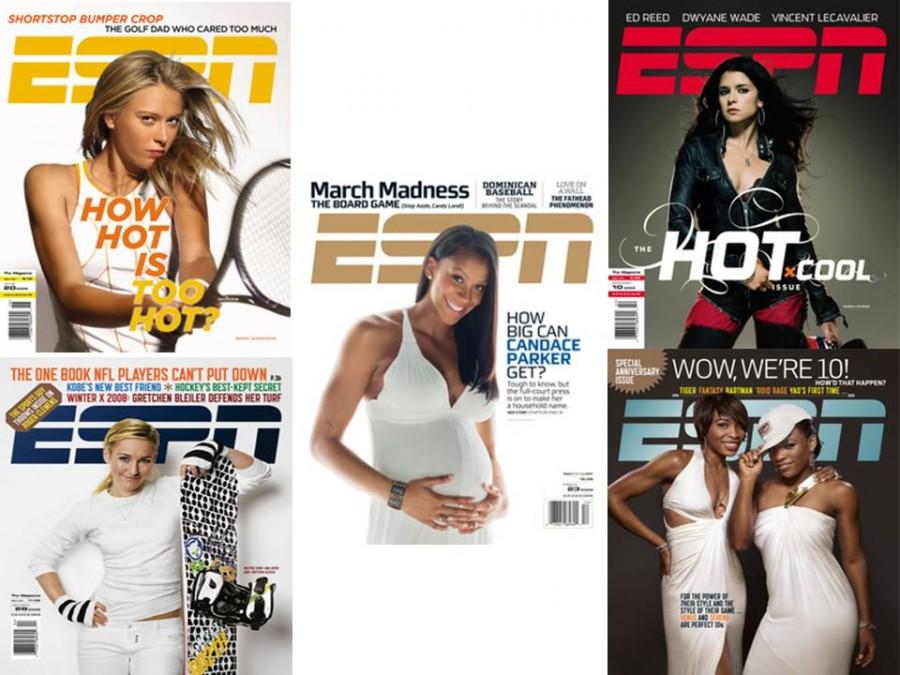No Coverage: The Media’s Disrespect Towards Women’s Sports
March 1, 2016
Believe it or not, but 41 years after the first-ever nationally televised women’s college basketball game aired, women are still fighting for media coverage.
“Media Coverage and Female Athletes,” a documentary that aired in 2013 on a PBS channel in Minnesota, but is widely available online, also noted that only four percent of female athletics receive media coverage.
In a 2014 study conducted by the University of Southern California (USC) on TV news media, women made up less than five percent of sports anchors and a little over 14 percent of ancillary sports reporters.
Of the women’s sports televised, 81 percent was basketball. The statistics in regards of media coverage have been consistently bad. Mike Messner, Professor of Sociology and gender studies at USC and author conducted an experiment on the subject. The report, “Gender in Televised Sports: News and Highlight Shows, 1989-2009,” exposed the ugly truth. In 1999 women’s media coverage reached it’s peak at a little under nine percent. In 2004 it decreased to six percent, and in 2009 it reached its lowest coverage of an estimated two percent.
The media is selling a sexualized conception of women’s sports. They’re overlooking the competitive nature of the game.
What media is doing is telling young female athletes that in order for women to make money in sports, they have to be sexualized.
“When male athletes receive media attention, such coverage is primarily focused on their skilled performance,” said Donna A. Lopiano, President of Sports Management Resources. “When female athletes receive media attention, the media is much more likely to focus on their physical attractiveness or non-sports-related activities.”
There are numerous examples of when a female athlete was mentioned because of her physical attribute, rather than the way that she plays. A twitter troll who received an unusual 15 seconds of fame because of the reply author JK Rowling gave him in support of tennis star Serena Williams stated “the main reason for her success is that she is built like a man.” After the Canadian Motorsports Expo in 2014, Former NASCAR racer Richard Petty said of Danica Patrick, “If she’s have been a male, nobody would ever know if she’s showed up at a racetrack.” It’s not just the female athletes that are getting sexist criticism. Rugby league journalist Erin Molan was quit her radio spot after she received comments on her body and sex life from callers, as well as her co-host. What has been listed is scarce to what is actually being said off the record.
This wouldn’t be an issue if men were facing the same negative situations, but they’re not. No one is talking about the physique of Russell Wilson or how sexy Cam Newton is. When male athletes are discussed, it’s never that personal.
These remarks have become so common that viewers have become desensitized to the ignorance. Why is Serena Williams’ body talked about more than her serves are? Is there a valid reason why Ronda Rousey has more publicity going for her because of her body paint photoshoot, than her MMA skills? The reason is simple, as noted by journalist Emily Liang, “Unlike male athletes, female athletes do not have the luxury of being primarily portrayed as performance athletes, as coverage of their beauty and sex appeal usually overshadow highlights of their on-field endeavors.”
What Liang and others who support women’s sports are saying is that newspapers, magazines television and interactive media see them as women first, athlete second. In this context that’s not fair. Their salaries are laughed at, leagues are disrespect and their greatness is overlooked. There has been a few improvements over the years on this subject. The World Major Marathon series gives each leading man and woman $500,000 at the end of the race. The Wimbledon now gives out equal cash prizes to all four grand slam matches. These are victories that have to be acknowledged, but we can still lobby for more media time for women’s sports, attend more of their games as well as continuously encourage young girls to stay active.









Smithd704 • Oct 26, 2016 at 3:12 pm
Your goal is to breed all the different dragons badkbdcdeeaaegae
Thomas Famous • Mar 1, 2016 at 2:22 pm
While you offer many generalizations and stereotypes (apparently acceptable as long as they aren’t “sexual’) about the media and men in general your article is an interesting read.
I have neither the time nor interest in correcting individually your exaggerations and inaccuracies but I will point out one specifically glaring example. You state:
“There are numerous examples of when a female athlete was mentioned because of her physical attribute, rather than the way that she plays.” “Former NASCAR racer Richard Petty said of Danica Patrick, “If she’s have been a male, nobody would ever know if she’s showed up at a racetrack.”
The problem with including this as an example of sexism is the fact that what Petty says is accurate. Take a moment to check her actual results (I recommend a site like http://racing-reference.info/) and you will see that regardless of gender she’s really pretty awful at racing (I almost said her “day job” but that is actually promoting Brand Danica, NASCAR comes in a distant second).
P.S. – One further comment which undermines much of your outrage. You point out “The Wimbledon now gives out equal cash prizes to all four grand slam matches.” That’s right women get equal pay for less work (Men must win best of 5 games to win a set while for women it’s 2 of 3). Perhaps not the best example of fairness and equality.